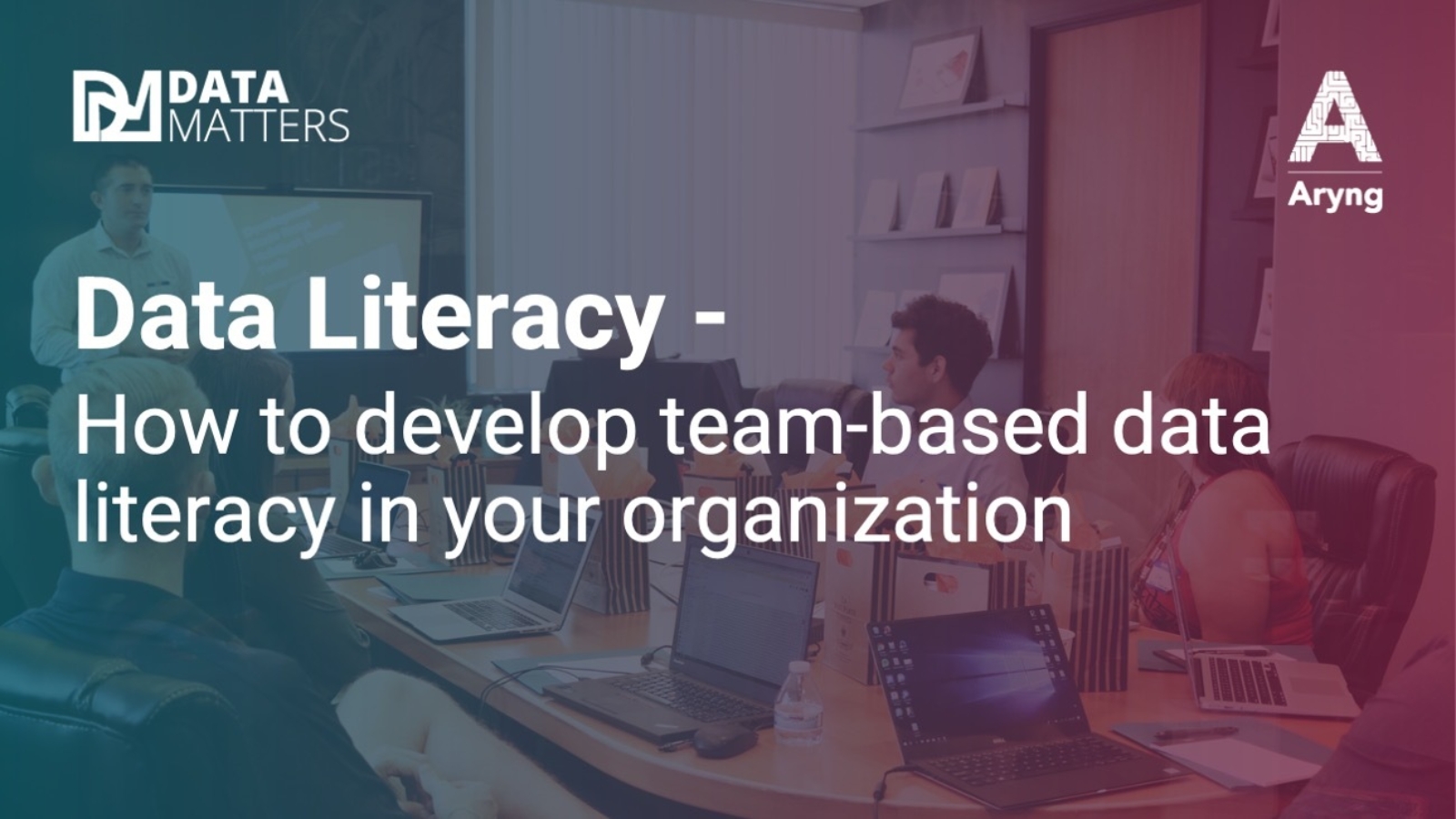“They are just navel-gazing,” my boss told me. Many years ago, I heard this term after a meeting where most of the attendees acted like the meeting did not apply to them.
If you are in ancient Greece practicing meditation, navel-gazing is the proper way to describe the position of your head. In modern terms, it means the “useless or excessive contemplation of a single issue at the expense of a wider view.” (Google Dictionary)
Data literacy in the corporate world has a navel-gazing problem. Not everyone, but most. This is how you can tell if you do, too.
The Problem: Using “I-Measures” and Focusing on Individuals
- Using “I-measures.” Your data literacy program has an impressive dashboard showing the contribution of disparate activities, workstreams, or functions, not the whole. They reinforce the idea that “I measure what I am responsible for.”
- No R.O. But you track Investment. (Also referred to as vanity metrics and success theater, terms coined by Eric Rese, “The Lean Startup.”)
- You look at data literacy program metrics in units of Individuals,” e.g., how many have been trained, have a skill, or getting a certification.
- You define a data literate Individual as someone with the ability to read, write, and communicate, etc.”.
Still not sure? Here are a few more telltale signs.
- If data is used for decision-making, the people drawing insights are different from the people who generated the data. Data is used by one group to tell another group they are the problem. Conflict ensues.
- Business people have the perception that the data function is responsible for data-driven insights and recommendations.
The Solution: A Team-Based Data Analytics Approach
Data analytics always takes a wider view.
A data-literate organization is one that creates new business value through data. The only “I” that applies is when the impact through insights is shown to leaders. Productivity returns earned from automation through data tools are another form of return on investment. But pay attention to how this impact data is collected. Does it come from surveys of “I” individual perception? If so, good for you for making process improvements. But that is not the practice of data analytics.
What changes with this definition? The data literacy program and metrics become very actionable.
First, data literacy happens when skills are put into practice during hands-on, end-to-end data analytics. Do you have a data analysis process for non-data experts? If not, then you are unaware of the analytics process skills they have or might be missing. That is a big gap in your assessments and training. A process like BADIR ensures that the team has a common language and a shared understanding of the problem. This behavior needs to be developed to eliminate the siloed thinking that many leaders believe is holding them back.
Second, the definition means teams are core to your data literacy strategy. If you think about it, data analytics has never been an individual effort. Teams comprise business people and data people working together on a specific business problem and who have the relevant mix of skills needed to solve it. Do you assess team-based competence? If not, you will most likely miss areas like professional skills and a data-driven mindset. At Aryng, our studies have shown that 50% of skill comes from these two areas in successful data analytics projects.
Data analytics is not the sole responsibility of the data team. One organization relied on a data request process to engage data experts, creating inefficiencies in how the data team was utilized.
Even if one person had all the necessary skills and expertise, they don’t control the data. Data needed for analysis, if it exists, resides in different parts of the company.
Third, the definition should cause you to ask questions about business value. Data analysis can be a journey of a thousand questions. That is why people often feel like they are drowning in data. The first questions should be about the potential business value and how it can be unlocked. The answer is most likely sitting in Product, Marketing, Risk, Operations, or HR. Not in the data function.
Key Characteristics of Successful of Team-Based Analytics
Every successful team engaged in data analysis has these three characteristics:
- Functional business leaders provide the team with the strategic context behind the problem or opportunity and empower the cross-functional team to work on it. They know how to engage with the team throughout the analysis process. Who are these leaders, and how do they engage with the team? They are CXOs, leaders of functions, and business units. Most analytics projects will be championed by more than one. They also champion developing people by implementing the analytics process.
- The team has collective accountability for coming back to decision-makers with actionable recommendations backed up by data that deliver impact.
- New ways of working (NWoW) that fit team-based data analytics and change mindsets. These are practical, hands-on working agreements. Not vague concepts, models, or a list of principles. Working agreements are tied to business impact. (similar to how agile product management is tied to value delivery.) Chances are you don’t have an analytics process that works for non-data people as well as data experts. Again, BADIR lays the foundation for NWoW, collective accountability, and leadership engagement. For all three of these characteristics.
The Importance of Senior Leadership Engagement and New Ways of Working
What does it take to get a wider view of your data literacy strategy?
Work with senior leaders to define a few key data analytics projects. Train leaders to champion the data analytics process and engage with the teams at key moments during the project. Then ensure each team has the assessment and training needed for their project. The assessment needs to cover more than charts, stats, and storytelling. Training is not the typical learning path that is given to individuals. Training is relevant to what they need to solve the specific problem.
Taking a Wider View: Who benefits and how.
The wider view has immediate benefits for everyone.
When you get leaders and team members aligned, trained, and working together, you will quickly see a significant shift in mindset that can lead to a permanent transformation. Leaders see BADIR as a more strategic, hands-on approach that is better aligned with what data literacy should do for the organization: deliver new value through data. They see how they engage with the team and what to expect. They also see it is scalable to the right people in the organization. For non-data experts, BADIR gives them new skills to interact efficiently with data experts and vice versa. Doing a hands-on project develops the citizen analysts your organization will need.
In summary, the wider organizational view is what delivers results and change that is scalable and sustained. What can it do for data literacy strategy in 2023?
We would like to know what you think! Contact us at aryng.com or email Susan Stocker, Principal Consultant – Data Literacy, at susan@aryng.com


Add a Comment